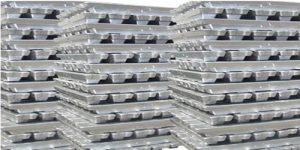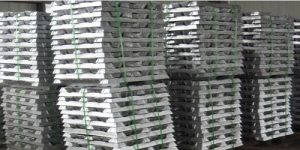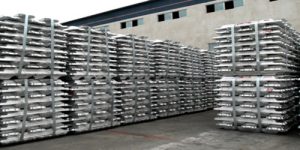Aluminum ingots are generally made by pouring molten metal into a refractory mold cavity and solidifying it. After solidification, the desired finished product is removed from the refractory mold either by breaking the mold or by splitting the mold. This solidified product is called a cast product. This process is also known as the casting process.

1.1 Advantages and limitations Casting is widely used in manufacturing because of its many advantages. Since molten metal can flow into any small part of the mold, both internal and external complex shapes can be created by casting. Both non-ferrous and non-ferrous metals can be cast. In addition, the tools for casting the required molds are very simple and inexpensive. Therefore, for trial production and small batch production, casting is an ideal production method. The exact amount of material required can only be calculated during the casting process. Thus reducing wasted material in the design process can be achieved. Castings generally cool uniformly from all sides, so we want the metal to have no directional properties. Some metals can only be used in the casting process and not in other processes such as forging, because other metal components are not expected to be involved in the metal forming process. Casting can be used in the manufacture of products of any size and weight, even 200-ton products. However, the precision and surface finish of the product in the ordinary sand casting process cannot meet the requirements of the product in many cases. Considering these situations, the die-casting method will be introduced in the following chapters. In addition, sand casting is labor-intensive, so there should be improvements in mechanical forming and casting mechanization. For some materials, it is often difficult to eliminate problems that arise during the casting process.

1.2 Applications Typical applications of sand casting are cylinder blocks, bushings, machine tools, pistons, piston rings, rolls, wheels, bearing housings, water supply pipes and boutiques, and chimes.

1.3 Composition of casting. Mold box: The mold box can keep the sand mold intact. According to the different positions of the mold box in the mold structure, the mold box can have many different names such as resistance mold box – lower mold box – upper mold box and side – middle mold box casting is used in three-mode casting. It is composed of a temporary wooden box and a long-term metal box. Mold: A mold is a replica of a product with some finishing needed for casting. The cavity of the mold is made with the help of the mold. Parting line: This is the dividing line between the two molds that make up the sand mold. It is also the dividing line between the two molds in parting casting. Pouring base plate: This is a base plate made of ordinary wood used when the mold is just made. The mold is first placed on the pouring base plate, the sand is sprinkled on it first, and then the sand is pounded hard. Surface sand: Sprinkle carbon sand on the inner surface of the molding cavity to meet the requirements of the surface finish of the casting product. Molding Sand: This is a fresh, fermented material used to make mold cavities. This is made up of used burnt sand. Sand Core: In casting it is used to create cavities. Pouring Cup: It is a small funnel into which molten metal is poured into a mold. Sprue: It is a channel through which molten metal is poured into the mold cavity. In many cases it controls the flow rate of molten metal into the mold cavity. Cross runner: It is a path that allows the molten metal to flow regularly before it flows into the mold cavity. Gate: This is an exact inflow point for molten metal to flow into the cavity. Mandrels: Mandrels are used in the sand core in the mold cavity to protect the sand core from its own weight and overloaded metal stress. Condensation: Condensation is the product placed in the mold for the purpose of increasing the cooling rate of the casting to provide a uniform or desired cooling rate. Riser: This is the opening in casting that provides molten metal so that when there is molten metal somewhere solidifying and there is metal reduction, molten metal can flow into the mold cavity.

1.4 Procedures for sand moulding. Start by placing a casting base plate either on the forming platform or on the base plate, making sure the surface is flat. The drag box is placed up on the base plate, and the center box in the resistance part of the mould is placed on the base plate. There should be sufficient cleanliness between the moulds and the wall height of the sandbox should be in order between 50mm and 100mm. Dry surface sand is sprinkled between the base plate and the mold to provide a non-spraying adhesive layer. The fresh sand is poured into the drag box and the thickness of the mould is between 30 and 50mm. The rest of the drag form box is filled with sand and uniformly compressed sand. The sand should be properly compressed so as not to compress too tightly, so as not to expose the gas, and it should not be too loose or the mold will not have enough strength. After punching, the sand in the sandbox was completely used in every corner. Now, use a linear hole between 1 and 2mm with a solid bottom, this vent is punched in the drag box and goes through the bottom of the sandbox to vent the air out of the sandbox as the metal solidifies during the casting process. This completes the preparation of the drag box. After the drag box is complete, it’s time to expose the mold on the bottom plate. Using a smoothing tool, smooth around the sand edge of the mold and place a copy of half of the mold on the drag mold, positioning it with the dowels. Position the upper sandbox of the drag box firmly with the help of the locating pins. Sprinkle the trailer and mold with dry sand. The casting pin used to hit the sprue is placed at a small distance of about 50mm from the mold. And if needed the riser needles will be placed in a suitable place and fresh mould sand and drag box along with sprinkle some sand and tamp. There should be too much sand and the vents should be all over the place as on the trailer. The sprue and riser pins should be carefully pushed out of the sandbox. Then open a pouring cup near the pouring spout. The cope is separated from the drag box and any loose sand on the inner surfaces of the cope and drag box is blown off with the bellows. Now that the upper box and the two halves of the drag mold are separated by the sharp point, the mold cavity is gently and gradually opened from all sides when pulling the mold to ensure that the sand wall is not broken during the mold separation process. Care must be taken not to damage the mold when opening cross runners and gates in the mold. Any excess and loose sand is blown off with a bellows. Now the surface sand is composed of sticky sand and sprinkled on each part of the cavity, and the cross flow channel will give the product a smooth surface. Prepare dry sand with a core box. Mold As previously defined, a mold is some modification required for the casting of a replica of a product. The modifications made are as follows: 1 to increase the breadth of the mould 2 to provide the application of sand cores 3 to eliminate some details that cannot be cast, so that better details are obtained by further processing.